
Anchor Down: Tolbert Set 400H CR In 1997
There have been a few thousand national champions crowned over the near century-long span of the NCAA Division I Outdoor Track & Field Championships and a few dozen have set a collegiate record en route to an individual event title. But, how many of those performances led to an invitation to meet with a sitting Vice President of the United States?
Vanderbilt’s Ryan Tolbert earned that experience of a lifetime in 1997. Running the 400-meter hurdles in a collegiate record 54.54 for the NCAA title, Tolbert captured the first national crown (individual or team) in the history of Vanderbilt University.
Head coach Paul Arceneaux remarked, “Ryan was charging the whole way. Usually she just runs fast enough to win, but today she left no doubt. With three hurdles to go, you knew she was going to win. It’s a great feeling to know that she is the first Vanderbilt athlete to win an NCAA Championship.”
It was such a special occasion that Tolbert garnered the attention of then-Vice President of the United States Al Gore. He and his wife, Tipper, were going to visit the Chancellor of Vanderbilt, Joe B. Wyatt, in the next few days and asked if Tolbert could join them for dinner.
Originally from Clovis, New Mexico, Tolbert started her career as a heptathlete, but a fussy hamstring injury sidelined the all-around speciality. Her focus on the long-distance hurdles proved to be a good fit.
To wit: Tolbert also finished third in the 400 meters that year. To this date, she is only the third woman in meet history to win the 400H and earn a place in the non-hurdled one-lapper (Iowa State’s Nawal El Moutawakel was first in 1984; South Carolina’s Lashinda Demus followed in 2002).
The NCAA and collegiate track & field will mark a momentous milestone in the spring of 2021 -- the 100th anniversary of the NCAA Championships and with that, the NCAA Track & Field Championships. In June 1921, the University of Chicago hosted the first track & field championships in NCAA history.
This point can’t be emphasized enough: Not only was the event the first for NCAA track & field, but the first championships for any sport under the sponsorship of the NCAA.
To celebrate, over each of the next 365 days, the U.S. Track & Field and Cross Country Coaches Association (USTFCCCA) will celebrate moments, student-athletes, and coaches that have made a century’s worth of championships special. From humble beginnings to important historical milestones to the modern-day, collegiate track & field has evolved with the American society.
The 2021 edition of the NCAA Division I Outdoor Track & Field Championships begin with preliminary round action on May 27-29 in Jacksonville, Fla., and College Station, Texas. The championships final site and culmination of the celebration is slated for June 9-12, 2021 at the newly rebuilt Hayward Field in Eugene, Ore.

Lawson Completed “Jesse Owens Triple” In 2016
Jarrion Lawson won the 100, 200 and long jump at the 2016 NCAA Division I Outdoor Track & Field Championships.

Plab Reached Lofty Heights In NCAA HJ
Darrin Plab won back-to-back HJ titles at the NCAA DI Outdoor T&F Championships in 1991 & 1992. Plab cleared 2.34m (7-8) in 1992 & tied the 2nd best bar in meet history.
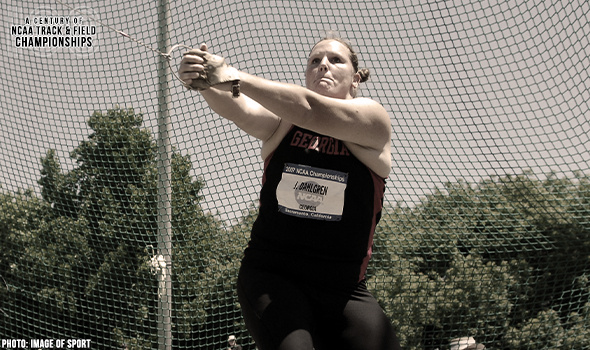
Dahlgren Won Back-To-Back HT Titles, Set MR
Jenny Dahlgren won back-to-back hammer titles at the NCAA DI Outdoor T&F Championships in 2006 & 2007. Dahlgren set a MR of 70.72m (232-0) in that second year.

Peoples Made History One Lap At A Time
Maurice Peoples won the 440-yard dash in 1973 & then really turned up the heat. Peoples split 43.4 on the Sun Devils’ mile relay team that finished third in the final.
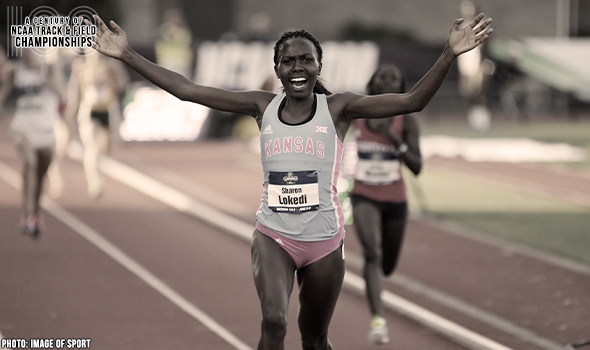
KU’s Lokedi Set 10K MR In 2018
Sharon Lokedi won the 10K at the 2018 NCAA DI Outdoor T&F Championships in a meet-record 32:09.20. Lokedi led five other women under the old final-site best, too.
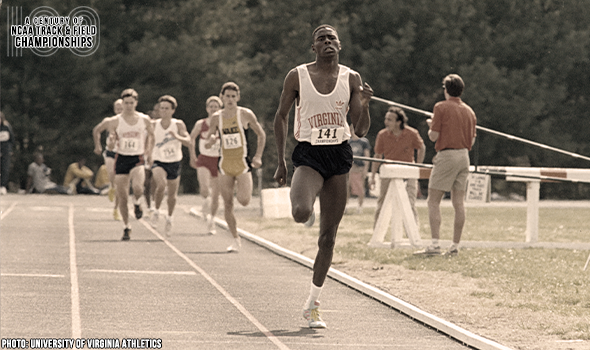
Can Ereng Kick It? Yes, He Can!
Paul Ereng won back-to-back 800-meter titles at the NCAA DI Outdoor T&F Championships in 1988 & 1989. Ereng is still the current indoor record holder in the event.

“California Comet” Doubled Up At NCAAs
Hal Davis completed the 100-200 double twice at the NCAA Outdoor Track & Field Championships.
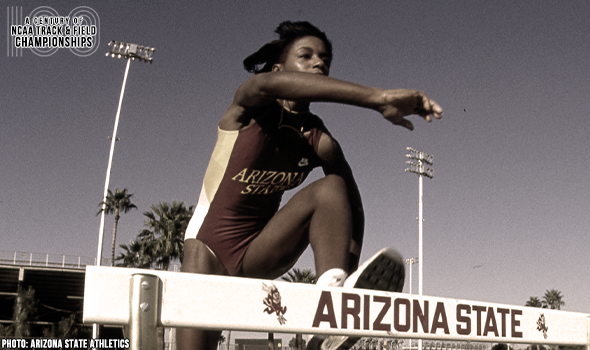
Tolbert Clocked 100H Meet Record In 1988
Lynda Tolbert won two career 100H titles at the NCAA DI Outdoor T&F Championships in 1988 & 1990. When Tolbert won in 1988, she set a MR of 12.82.

Dwight Stones Set High Jump WR In 1976
Dwight Stones set a world record in the high jump of 2.31m (7-7) at the 1976 NCAA DI Outdoor T&F Championships. Stones also raised the MR by more than 3 inches!
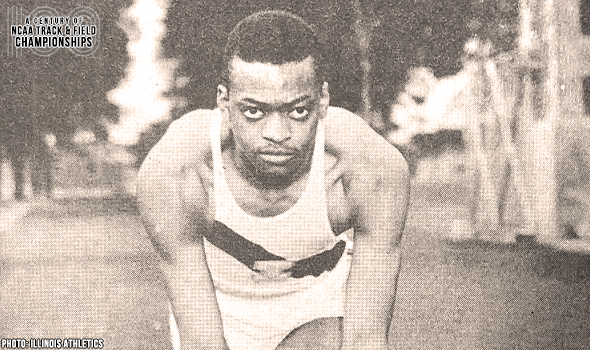
Walker Completed Only Hurdling Triple
George Walker is the only athlete in NCAA Outdoor T&F Championships history to win all three hurdling events: 110H (120H), 400H & now-defunct 220H.

